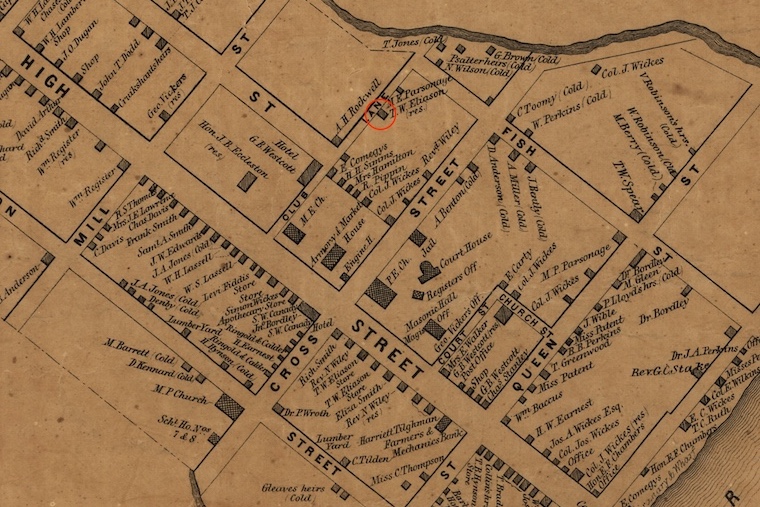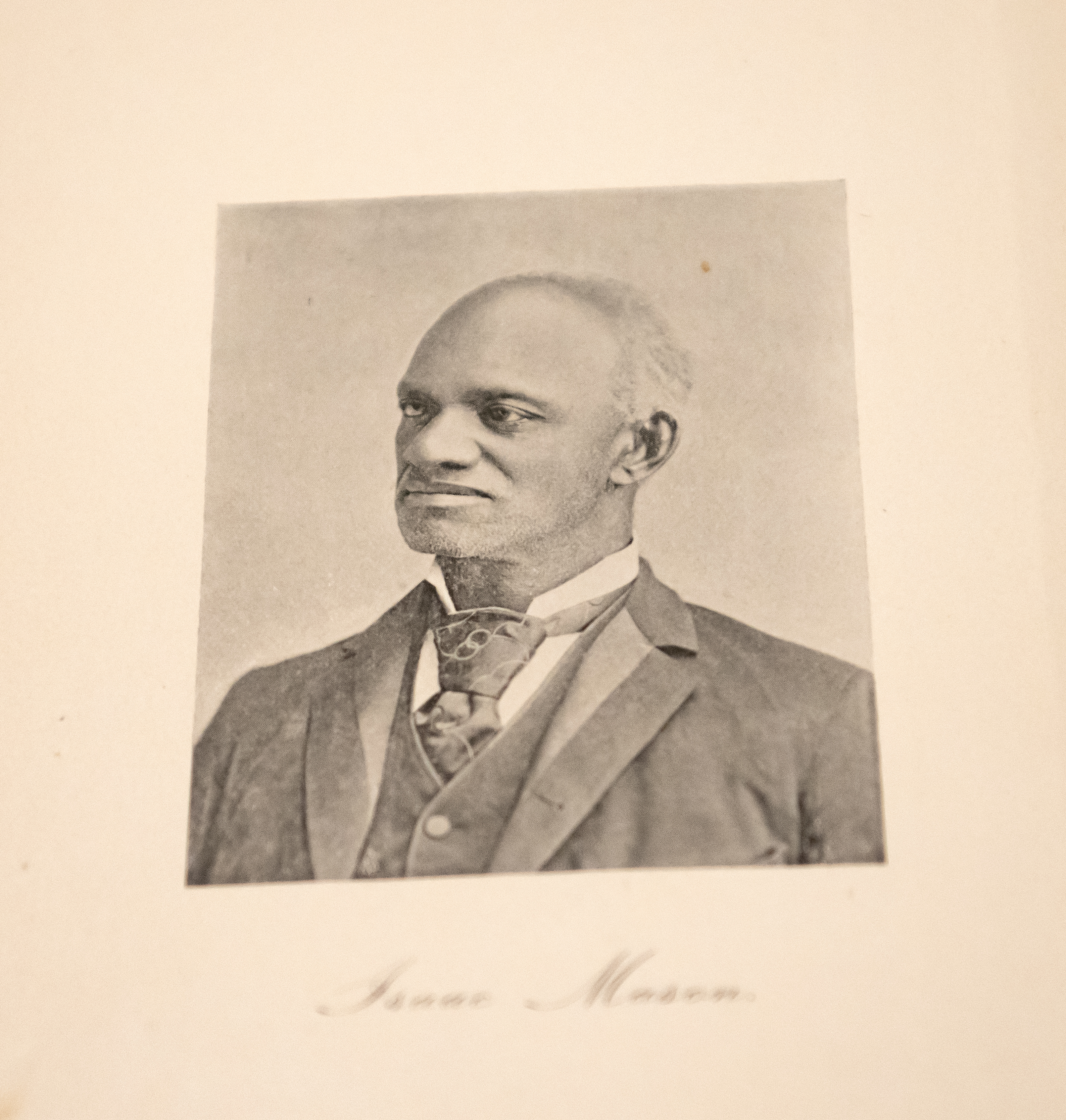Students Reveal a House’s Underground Railroad History
Undergraduate research wins federal recognition from the National Park Service.

The previously hidden Underground Railroad history of a 200-year-old house in Chestertown, Maryland, has been revealed by students and staff at the Washington College Starr Center for the Study of the American Experience. This spring, the National Park Service formally validated their research by adding the structure — known as the Isaac Mason Escape Site — to its National Underground Railroad Network to Freedom.
On the night after Christmas in 1846, a young man named William Thompson fled after years of abuse by the Mansfield family, which had enslaved him since the age of 15. Assisted by a network of Black “conductors” on the Underground Railroad, he escaped first to Pennsylvania, then to Massachusetts, where he changed his name to Isaac Mason to avoid recapture. Under that name, he published his 1893 memoir, Life of Isaac Mason as a Slave, vividly recounting his ordeal. It is among the most detailed firsthand accounts of slavery in 19th-century Maryland.
 Mason's story was previously known to historians, but the exact location of his enslavement
and escape had been lost. Delving into early land deeds, wills, and newspapers — as
well as unearthing telltale clues in Mason's own memoir — Washington College's research
team pinpointed 101 Spring Avenue in Chestertown as the Mansfield home from which
Mason fled. Their work was complicated by the fact that the house turned out to have
been moved down the street from its original location in the 1890s to the current
Kent Cultural Alliance property.
Mason's story was previously known to historians, but the exact location of his enslavement
and escape had been lost. Delving into early land deeds, wills, and newspapers — as
well as unearthing telltale clues in Mason's own memoir — Washington College's research
team pinpointed 101 Spring Avenue in Chestertown as the Mansfield home from which
Mason fled. Their work was complicated by the fact that the house turned out to have
been moved down the street from its original location in the 1890s to the current
Kent Cultural Alliance property.
The National Park Service's recognition is a major milestone. Many old houses in Maryland and elsewhere have oral traditions of Underground Railroad connection, but relatively few can be definitively documented. The Underground Railroad Network to Freedom was established in 1998 to find verifiable histories among the many rumors and legends. Park Service historians carefully reviewed a 45-page evidence dossier assembled by Washington College students and staff before grating their seal of approval.
“Students at the Starr Center have been investigating this mystery for a long time,” said Adam Goodheart, the Center's Hodson Trust-Griswold Director, who compiled the students' research into the Park Service submission. “Nearly 20 years ago, one of our undergraduates identified the site as a possible location of Mason's escape. Later, another student found important papers in the State Archives documenting his enslavement. But now, our team's hard work and ingenuity have resulted in a major new historical landmark on Chestertown's map.”
Half a century after his escape, Mason recalled the moment that he “bade farewell to the Mansfield house with its cares and lashes, and started for the land of liberty.” Following the North Star through woods and fields, avoiding pursuers under the guidance of local free Black conductors, Mason and two formerly enslaved companions made their way across the Mason-Dixon Line. In Massachusetts, he became an entrepreneur, antislavery activist, and civic leader.
While millions of Americans are familiar with the escape stories of Frederick Douglass and Harriet Tubman, countless tales of freedom-seekers like Mason — who was born within just a few years and a few dozen miles of Douglass and Tubman — remain little known. Washington College's Miller Library recently acquired a very rare first edition of Mason's autobiography.
“This is such an amazing and very full circle moment,” said Emily Stiles '28 when Mason's autobiography was unveiled at the library. Stiles worked on the project from its outset in the fall of 2023. “The process of applying for the historical marker... has provided me with key research skills that will aid me for the rest of my life. The team overcame many obstacles, from long hours searching for land deeds to questioning the historical accuracy of the house's location."
The site of Mason's escape is now the headquarters of the Kent Cultural Alliance, which creates and supports arts and culture programming across the county. A portrait of Mason by local artist Jason Patterson hangs in the lobby. Patterson, Goodheart, and Jaelon Moaney, the Starr Center's deputy director, led the research team.
In addition to pinpointing the escape site, the Washington College researchers compared early maps with current-day satellite images to find the probable location of Mason's birthplace in the nearby town of Galena, Maryland. They found his unmarked grave in Massachusetts and have even traced present-day descendants of the Mason family. They now hope to contact those descendants and invite them to a special event at the Isaac Mason Escape Site planned for the fall of 2026.
To learn more about its ongoing work to preserve history and to receive event invitations and updates from the Starr Center for the Study of the American Experience, please subscribe to its newsletter.
- Christine Sinatra